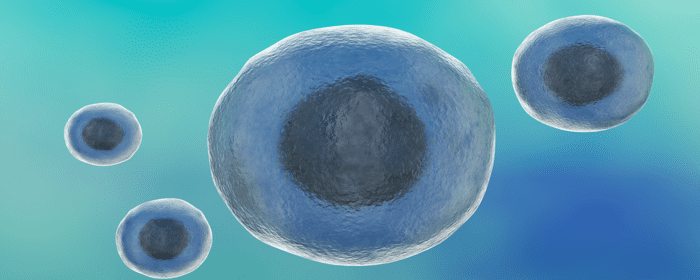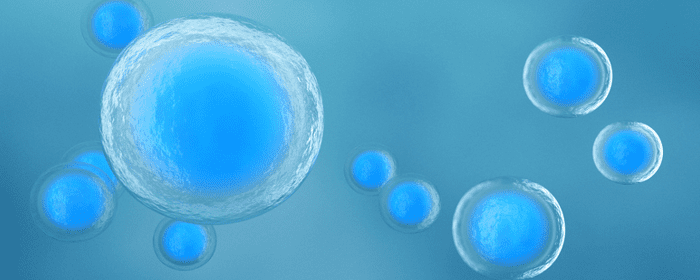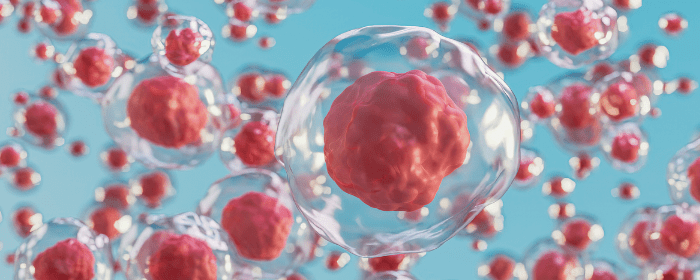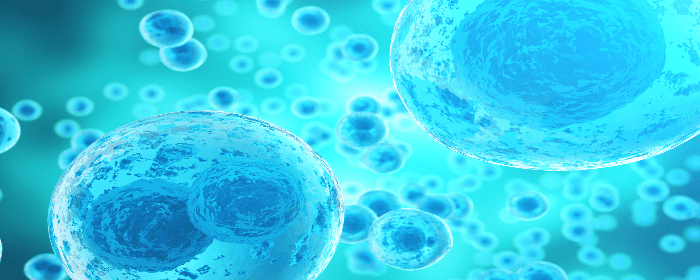
by admin | Apr 4, 2024 | Diabetes, Mesenchymal Stem Cells, Regenerative Medicine, Stem Cell Research, Stem Cell Therapy
According to the World Health Organization, an estimated 422 million people worldwide have diabetes. Numerous studies have demonstrated that people with diabetes are at an increased risk of developing both acute and chronic pancreatitis, which increases the risk of developing pancreatic cancer.
Considering the lack of effective therapeutic options for pancreatitis and the limited treatment options for diabetes, researchers have recently turned to the potential of using mesenchymal stem cells (MSCs) as alternative therapeutic treatment options for these conditions.
In this review, Scuteri and Monfrini evaluate the different uses of MSCs for both the treatment of diabetes and the reduction of diabetes-related disease development.
According to the authors, MSCs offer several advantages, including the ability to be isolated from different tissues in a simple way, the ability to be easily harvested and expanded in vitro, and the absence of ethical problems associated with harvesting and use.
In addition, MSCs demonstrate the ability to differentiate, release soluble factors, and migrate toward lesions and sites of inflammation. Considering that inflammation and apoptosis are significant etiopathological factors of diabetes and pancreatitis, Scuteri and Monfrini indicate that MSCs are excellent candidates for regenerative medicine purposes.
In the case of MSCs and diabetes, research has demonstrated that differentiation of MSCs into insulin-releasing cells has been demonstrated in vitro after direct contact with pancreatic islets; the release of anti-inflammatory and antioxidant factors has improved the engraftment and prolonged the survival of transplanted pancreatic islets; and inhibited the apoptotic pathways triggered by endoplasmic reticulum stress in transplanted pancreatic islets. In analyzing this research, the authors conclude that the potential exists for the safe and effective use of MSCs for treatment of diabetes.
Although there has been growing interest in exploring the potential of MSCs on pancreatitis, there have only been a few studies exploring this therapeutic option. In these studies, the presence of MSCs was observed to reduce fibrosis and parenchymal damage by reducing proinflammatory factor expression.
In regard to MSCs and pancreatic cancer, since diabetes and pancreatitis are risk factors for the development of pancreatic cancer and considering MSCs have been found to hold potential as a therapeutic option for these diseases, using MSCs to interrupt the flow of factors leading to the development of pancreatic cancer should lower the incidence of diabetes-related pancreatic cancers.
The authors conclude that MSCs are a very promising therapeutic option for the treatment of diabetes, pancreatitis, and pancreatic cancer.
Source: “Progress in exosomes and their potential use in ocular diseases.” 18 Sep. 2020, https://www.ncbi.nlm.nih.gov/pmc/articles/PMC7459212/.

by admin | Dec 28, 2023 | Diabetes, Mesenchymal Stem Cells, Stem Cell Research, Stem Cell Therapy
Type 2 diabetes mellitus (T2DM) is a serious health condition characterized by progressive deterioration in glycemic control resulting from decreased insulin sensitivity and diminished insulin secretion. Currently, it is estimated that over 462 million people worldwide are affected by T2DM.
While diet, physical exercise, and glucose-lowering medications have been shown to improve hyperglycemia, the results have been temporary and have not been able to inhibit the pathogenesis or reduce the morbidity associated with this condition.
With the need for more effective approaches for the treatment of T2DM to be developed, Zang et al. conducted this single-center, randomized, double-blinded, placebo-controlled phase II trial study to explore the efficacy and safety of intravenous infusion of umbilical cord-derived mesenchymal stem cells (UC-MSCs) in Chinese patients with T2DM.
MSCs are a type of adult stem cell that exhibits profound anti-inflammatory and immunomodulator capacities. Considering the successful application of MSCs in a number of autoimmune diseases, including stroke, myocardial infarction, rheumatoid arthritis, and systemic lupus erythematosus, the authors hypothesized that MSC transplantation might also be a therapeutic option for the treatment of T2DM.
Specifically for this study, the authors randomly assigned 91 patients to receive intravenous infusion of UC-MSCs or placebo three times at 4-week intervals and followed up for 48 weeks over a period of three years.
The primary endpoint established for this study was the percentage of patients with glycated hemoglobin (HbA1c) levels of < 7.0% and daily insulin reduction of > 50% at 48 weeks; additional established endpoints included changes of metabolic control, insulin resistance, and safety.
At the end of the 48-week follow-up period, Zang et al. report that 20% of patients in the US-MSCs group and 4.55% reached the primary endpoint with the percentage of insulin reduction of the UC-MSCs group being significantly higher than that of the placebo group. The authors also reported that the glucose infusion rate (GIR) increased significantly in the UC-MSCs group while there was no significant observed change in the placebo group. There were also no major UC-MSC transplantation-related adverse events reported during this study.
While these results are promising, the authors point out that since the age, course of T2DM, condition of the islet β-cell function, and insulin resistance of the enrolled subjects were highly heterogeneous, the results of this study could not be extended to all patients with T2DM. The authors also call for additional long-term follow-up to validate their initial, short-term findings as well as for future well-controlled studies with an increased number of cases to better clarify the efficacy and safety of intravenous infusion of UC-MSCs for the treatment of T2DM.
The authors conclude this study by suggesting intravenous infusion of UC-MSCs administration is a safe and effective approach that could reduce exogenous insulin requirements alleviate insulin resistance and be a potential therapeutic option for patients with T2DM.
Source: Zang, L., Li, Y., Hao, H. et al. Efficacy and safety of umbilical cord-derived mesenchymal stem cells in Chinese adults with type 2 diabetes: a single-center, double-blinded, randomized, placebo-controlled phase II trial. Stem Cell Res Ther 13, 180 (2022). https://doi.org/10.1186/s13287-022-02848-6

by admin | Apr 28, 2023 | Diabetes, Health Awareness, Regenerative Medicine, Stem Cell Therapy
Diabetes is one of the most common conditions in the world, affecting more than 37 million people in the United States alone.
Diabetes is a chronic condition that affects your body’s ability to process glucose, resulting in high blood sugar levels. An estimated 96 million people have prediabetes, meaning they could soon be diagnosed with Type 2 diabetes.
To avoid a diabetes diagnosis, it is important that you can recognize early indicators of the disease. The following are some signs that may mean you have diabetes:
Excessive Urination
One of the earliest signs of diabetes is excessive and unusual urination. When you have diabetes, your body does not use sugar properly. The sugar collects in your blood, and your kidneys go into overdrive to remove it from the body. Your overworking kidneys lead to the constant urge to urinate.
Increased Thirst
With increased urination, you will start to experience increased thirst. Constant urination can cause your body to become dehydrated, and you will feel parched, even if you drink an adequate amount for your body weight.
Weight Loss
Another early indicator of diabetes is extreme and unintentional weight loss. If you’ve noticed that you are losing a lot of weight without really trying to, you may have diabetes. For some people, this can be as much as 10 pounds in one month.
This weight loss occurs because your body is not processing glucose as it should be. Your cells become starved for glucose or energy and begin to find it elsewhere, causing you to burn fat at a rapid pace.
Diabetes Treatments
If you are experiencing these symptoms or other concerns, you may have diabetes or prediabetes. To get a proper diagnosis, speak to your regular physician. There are many treatment options for diabetes.
Some are exploring regenerative medicine, also known as stem cell therapy. Stem cell therapy for diabetes is a potential treatment approach that involves the use of stem cells to generate new insulin-producing cells that can help regulate blood sugar levels in people with diabetes.
Stem cells are cells that have the ability to differentiate into different cell types and can also self-renew and studies have shown that stem cells can differentiate into insulin-producing cells.

by admin | Jan 5, 2023 | Mesenchymal Stem Cells, Diabetes, Regenerative Medicine, Stem Cell Research, Stem Cell Therapy, Umbilical Stem Cell, Wharton's Jelly
Mesenchymal stem cells (MSCs) are multipotent fibroblast-like cells found throughout the body and have been found to have self-renewing and multilinear therapeutic potential by providing new cells for tissue repair by replacing damaged cells.
Thought to stimulate repair and control the immune response through an expression of growth factors and other cytokines, MSCs are at low risk of rejection and repair tissue damage through immunomodulation, not by their ability to differentiate.
While MSCs can be isolated from a number of tissue sources, including bone marrow, peripheral blood, adipose (fat) tissue, umbilical cord blood, and umbilical cord tissue (Wharton’s jelly). MSCs derived from the human umbilical cords (UCMSCs) have been found to have significant advantages over MSCs isolated from other sources. These advantages include higher proliferation and self-renewal capacity and multilineage differentiation capability.
Unlike many sources of MSCs, the umbilical cord is considered medical waste, making the collection of UCMSCs noninvasive and eliminating ethical concerns associated with the collection of MSCs from other sources. These UCMSCs have been developed as effective “off-the-shelf” cell therapy for a number of conditions, including autoimmune diseases, and as a treatment for a number of emergency medical conditions.
This Phase 1 clinical study, designed and conducted by Chin et al., intended to determine the safety and efficacy of intravenous allogeneic infusion of UCMSCs in healthy volunteers and to determine the effective dose at which an immunomodulatory effect is observed. The findings of this study are intended to serve as a guideline and benchmark for future CVL-100 clinical research.
Analyzing the results of this clinical study, the authors report that there was no observed complication resulting from the infusion and no significant adverse event in either dosage group in the 6 months of follow-up. These findings led Chin et al. to conclude that UCMSCs infusion was safe among healthy subjects, results that were consistent with other UCMSC treatment-based studies.
The authors also reported that UCMSCs infusion posed no significant adverse effects in patients with type 2 diabetes. Despite the relatively small sample group of this study (11 subjects), the authors reported demonstrating an initial transient proinflammatory effect followed by a significant and prolonged anti-inflammatory effect.
In addition, Chin et al. report found that high-dose (HD) CLV-1000 infusion provided a significant increase in both hemoglobin level and MCV level that falls within the normal range. Biomarker assessment results also indicated that the HD group demonstrated a significant steady increase of cytokine IL-1RA from baseline up until 6 months of posttreatment. This finding is especially important as IL-1RA is a naturally occurring antagonist to the proinflammatory cytokine 1L-1.
The authors conclude that this study clearly demonstrates a difference in immunomodulatory effect between the high-dose and low-dose treatment groups, with the HD group demonstrating a significantly greater reduction of proinflammatory cytokine TNF-α and an increased level of specific anti-inflammatory cytokines within 6 months and in relation to those in the low dose group. Considering this, Chin et al. conclude that a CLV-100 dosage of two million MSCs per kilogram of body weight represents the optimal dose level for overcoming inflammatory conditions by displaying the best improvement in all parameters tested, absence of side effects, and SAEs.
The data collected in this study also suggests that this is the first study to report a significant reduction of globulin observed over the course of the study. This is important because globulin serves an important role in immunity. Additionally, increases in serum globulins are associated with several immune-mediated diseases, including rheumatoid arthritis, chronic liver disease, diabetes mellitus, and cancer.
Considering these findings, the authors of this study conclude that high doses of allogeneic MSCs could help exert beneficial effects of repair and healing.
Source: “High Dose of Intravenous Allogeneic Umbilical Cord-Derived ….” https://www.hindawi.com/journals/sci/2020/8877003/.

by admin | Nov 11, 2022 | Stem Cell Therapy, Diabetes, Mesenchymal Stem Cells, Stem Cell Research
Currently, it’s estimated that nearly 1.5 million Americans are living with type 1 diabetes (T1D), a number that is expected to increase to over 2 million by the year 2040[1]. In the U.S. alone, healthcare costs and lost wages directly related to T1D currently exceed $16 billion per year.
While the most common treatment for T1D continues to be regular injections of insulin and is effective in improving hyperglycemia, the treatment has proven ineffective in removing autoimmunity and regenerating lost islets. Additionally, islet transplantation, a recent and experimental treatment option for T1D, has demonstrated its own set of issues, primarily poor immunosuppression and a limited supply of human islets.
The rapid progression and recent advances in stem cell therapy, including mesenchymal stem cell (MSC) therapy, have created interest in using stem cells to help manage the symptoms of T1D. In this review, Hai Wu reviewed the properties of MSCs and highlighted the progress of using MSCs in the potential treatment of T1D.
Diabetes clinics have demonstrated progress using depleting antibodies as a way to treat T1D, but continue to find remission to typically last for only a short period of time. Additionally, treatment with these antibodies has shown not to discriminate between different types of T cells, meaning even T cells involved in maintaining normal immune function are depleted; this phenomenon has been shown to contribute to other serious health complications.
In addition to the immunomodulatory effects demonstrated by MSCs, they have also shown the ability to recruit and increase the immunosuppressive cells of host immunity. Recent results from clinical trials have shown that just a single treatment with MSCs provided a lasting reversal of autoimmunity and improved glycemic control in subjects with T1D.
While these results demonstrate the potential of MSCs for a wide range of autoimmune diseases, Wu points out that the small sample size of these studies necessitates further clinical trials before considering approval for use in clinical applications.
Studies of human islets and human islet transplantation have been limited because of a shortage of pancreas donors. Although unable to be definitively demonstrated, and considering their ability to differentiate into other cell types, there is a hypothesis that MSCs can transdifferentiate to insulin-producing cells. While not yet fully understood, this hypothesis is further supported by the observation of crosstalk between MSCs and the pancreas in diabetic animals.
Other in vivo studies examining this relationship has produced mixed results. For example, Chen et al. (2004) were unsuccessful in attempts to transdifferentiate MSCs into insulin-producing cells in vitro. On the other hand, several studies, including those by Timper et al. (2006) and Chao et al. (2008) demonstrate the formation of islet-like clusters from in vitro cultured MSCs and the possibility of using MSCs as a source of human islets in vitro.
Despite these promising findings, the author highlights that most of these studies failed to generate sufficient amounts of islets required for human transplantation and long-term stability. However, Wu notes recent advances in tissue engineering, including biocompatible scaffolds, might better support in vitro generation of islets from MSCs.
The author concludes that MSCs can be isolated from multiple tissues, are easily expanded and genetically modified in vitro, and are well-tolerated in both animal and human studies – making them a good candidate for future cell therapy. On the other hand, stem cell therapy alone might not be enough to reverse the autoimmunity of T1D, and co-administration of immunosuppressive drugs may be necessary to prevent autoimmunity.
MSCs have shown great promise in the field of regenerative medicine. While stem cells used as a potential treatment for T1D appear generally safe, the author calls for future in-depth mechanistic studies to overcome the identified scientific and manufacturing hurdles and to better learn how cell therapy can be used to treat – and eventually cure – T1D.
Source: “Mesenchymal stem cell-based therapy for type 1 diabetes – PubMed.” https://pubmed.ncbi.nlm.nih.gov/24641956/.
[1] “Type 1 Diabetes Facts – JDRF.” https://www.jdrf.org/t1d-resources/about/facts/. Accessed 2 Nov. 2022.

by admin | Dec 31, 2021 | Stem Cell Therapy, Diabetes, Mesenchymal Stem Cells, Stem Cell Research
According to recent data from the CDC, an estimated 30 million Americans currently have type 2 diabetes mellitus (T2DM), and another 88 million are considered to be prediabetic[1].
Occurring most often as a result of being overweight and/or sedimentary and often resulting in severe kidney, heart, or vision issues, T2DM has demonstrated to be difficult to treat, often resulting in life-long insulin therapy as the primary method of treatment.
Considering the negative impacts associated with insulin treatment, and T2DM in general, Liu, et al.’s research explores the potential of specific mesenchymal stem cells (MSCs) in the treatment of the condition.
Recently, stem cell therapy has been shown to be beneficial in improving glycemic control and beta function. Building off of these findings, Liu, et. al designed this study to specifically examine the efficacy and safety of Wharton’s Jelly mesenchymal stem cells transplantation (WJ-MSC) as a therapeutic option for those with T2DM.
The authors’ single-center phase I/II study involved observing 22 patients with T2DM for 12 months after receiving two injections of WJ-MSC (one intravenously and one intrapancreatic endovascularly). Over the course of the 12-month observation period, the participants were monitored with primary endpoints observed including changes in the levels of glycated hemoglobin and C-peptide and secondary endpoints including insulin dosage, fasting blood glucose, post-meal blood glucose, inflammatory markers, and T lymphocyte counts.
At the conclusion of this study, Liu et al. found that both glycated hemoglobin and fasting glucose levels demonstrated a progressive decline after WJ-MSC transplantation and over the course of the 12-month follow-up period, the suggested potential of long-lasting effects of the WJ-MSC treatment. Researchers also observed a general improvement in fasting C-peptide levels. Secondary endpoint observations over the course of the 12-month follow-up included improved beta-cell function and reduced markers of systemic inflammation and T lymphocyte counts.
While there were no significant adverse observed effects associated with either of the WJ-MSC injections, the authors did note isolated and separate incidences of mild fever, nausea, and headache in a very small number of participants – all of which spontaneously resolved within a week of onset. The authors also noted a temporary decrease in levels of C-peptide and beta-cell function one month after treatment, possibly related to the intrapancreatic endovascular injection. As a result of these observations, the authors call for further investigation of the safety of intrapancreatic endovascular delivery of WJ-MSC.
As a result of this research, Liu et al. concluded that their findings suggest the possible therapeutic potential of WJ-MSC transplantation for treatment of T2DM and specifically with improved beta-cell function, systemic inflammation, and immunological regulation. The authors also call for further large-scale placebo-controlled clinical studies to fully understand the safety and efficacy of WJ-MSCs in the treatment of T2DM. Source: “PMC – NCBI.” https://www.ncbi.nlm.nih.gov/pmc/articles/PMC4055092/
[1] “Type 2 Diabetes | CDC.” https://www.cdc.gov/diabetes/basics/type2.html. Accessed 22 Jan. 2022.







 St. Petersburg, Florida
St. Petersburg, Florida
